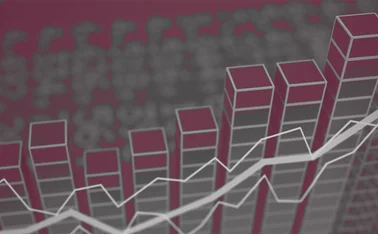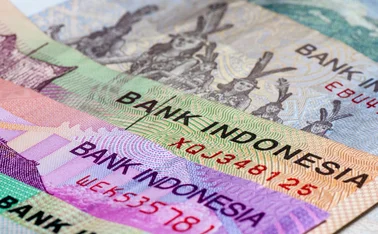
Striving for a green bank


Last year, when commemorating 40 years of successful reform and innovation of the Shenzhen Special Economic Zone since its establishment, President Xi Jinping noted that “lucid waters and lush mountains are invaluable assets”. This concept remains critical to achieving comprehensive and co‑ordinated economic, social and ecological sustainable development.
Guangdong Province is the first national‑level green finance reform and innovation pilot zone in China. In October 2019, the Agricultural Development Bank of China (ADBC) successfully issued the world’s first Guangdong–Hong Kong–Macao Greater Bay Area green financial bonds in Shenzhen.

The Fifth Plenary Session of the 19th Central Committee of the Communist Party of China (CCCPC), held in October 2020, laid out the blueprint for China’s development over the next five and 15 years. From this, a new development pattern has been created, with a focus on domestic cycles and a promotion of double cycles (both domestically and internationally – the ‘dual circulation’ policy) adhering to green development. Green development is undoubtedly important for the formation of a new development pattern – green finance drives green policy. China’s green financial market has developed quickly and is driven by the national goal to develop China into a great modern socialist country that is prosperous, strong, democratic, culturally advanced, harmonious and beautiful. It is pushed on by China’s policy of keeping abreast of the times, by the people’s pursuits of an environmentally friendly and healthy lifestyle, and by the need for green finance to drive the development of a green economy.
During the general debate at the 75th UN General Assembly in September 2020, President Xi pointed out that Covid-19 has reminded us that humankind can no longer afford to ignore the repeated warnings of nature and go down the beaten path of extracting resources without investing in conservation, pursuing development while protecting the environment, and restoring used resources. He said humankind should launch a green revolution and move faster to create a green way of development and life, preserve the environment and make the planet a better place for all.
While confronting current difficulties and challenges, countries are investing heavily in economic growth and promoting green growth and a green recovery. Financial institutions also foster green financial development, and have strengthened green finance co‑operation through economic recovery. For example, attendees of the Finance in Common Summit for public development banks in November 2020 discussed how to play a greater role in addressing climate change and ecological protection. As the only agricultural policy bank in China and the largest in the world, ADBC has always been committed to promoting green agricultural development and green finance.
Adding green value
Agricultural and rural ecosystems are an area of focus for ADBC. Supporting the development of agriculture, rural areas and farmers has not only significant economic and social benefits, but also a wide range of ecological benefits. For many years, ADBC has insisted on leading the line in green development within the financial services space. Green financial services have already begun to promote comprehensive realisation of the ecological, social and economic value of green products.
Work is under way to improve the green governance system. The head office of ADBC has established a green credit committee. Each qualified branch has established a green finance business unit, formulated green credit and green bond management measures, established an internationally authoritative certified green and sustainable bond framework, and clarified green financial product standards. Work has also been undertaken to improve green project identification and develop a green credit system that will be used to strengthen climate and environmental risk management. Meanwhile, efforts have also been made to incentivise businesses to be more sustainable and to release social responsibility reports to ensure we, as a business, are held accountable.
In addition, ADBC is actively promoting the greening of assets. It promotes ecological environmental protection in the Yangtze River Basin and the Yellow River Basin Development. It also supports the Three-River-Source National Park and other construction projects of national reserve forests.
By the end of September 2020, the ADBC’s green loans were valued at CNY810.9 billion, accounting for 19.3% of the bank’s medium- and long-term loans – higher than the average level of the banking industry in China. The investments focused on the ecological environment, green infrastructure upgrades, energy conservation and environmental protection. In addition, ADBC is actively developing green investment by focusing on the development of urban and rural areas.
Efforts are also under way to promote green financing initiatives. Relying on the country’s credit advantages, ADBC promotes green development in the bond market. We have issued various green bond products, covering domestic and overseas, in multiple locations, types and themes. ADBC has also established a model for guiding global investment in domestic green agriculture. The issuance of green labelled bonds has created a number of firsts, including the first public bidding issue of the largest single green financial bond in the market. In addition, ADBC continues to issue innovative green-themed bonds to global investors, backing the protection of the Yangtze River and the ecological protection of the Yellow River Basin. It also regularly issues seven-year ecological and environmentally friendly financial bonds at the Shanghai Clearing House; cumulative issuance has reached CNY88.2 billion. The ADBC also actively organises visits and investor seminars for green bond projects, has built an information communication platform and improved the transparency of green bond investment.
ADBC is also working to promote multilevel co‑operation in green finance. ADBC has been recognised by domestic and foreign financial markets for having set the bar for best practice and creating many opportunities for co-operation. ADBC is one of the first signatories of the Belt and Road Initiative green investment principles, and joined the green financial product innovation group, in addition to signing a strategic co-operation agreement with the Climate Bonds Initiative. As a result, the institution has been invited to participate in the construction of China’s green bond evaluation and certification mechanism, and join forces with the Centre for International Climate and Environmental Research, the International Institute for Sustainable Development, Hong Kong Quality Assurance Agency and the China Energy Conservation Investment Corporation.
The Fifth Plenary Session of the 19th CCCPC outlined a blueprint for green development in the 14th Five Year Plan (2021–25) for National Economic and Social Development and the Long-Range Objectives Through the Year 2035. This calls for much greater requirements in terms of green finance. ADBC is also stepping up to support agricultural green development. To further implement the commitment made by President Xi at the UN in September 2020 to hit the peak of carbon dioxide emissions by 2030 and to achieve carbon neutrality by 2060, ADBC will firmly establish a concept of green development and fulfil the responsibility of policy-based finance.
ADBC’s priorities
We will increase the amount of resources dedicated to green development. ADBC is eager to uphold the concept of green and sustainable development, fulfil all its social responsibilities, enhance the consciousness and initiative to promote green development, continue to innovate green financial products, and attract and mobilise more funds to invest in relevant projects.
Fostering high-quality development of green finance is also vital. ADBC is willing to work with all parties, sectors and stakeholders in the construction of a green financial market to promote green policies and build an environment in which financial services are incentivised to become more sustainable. With this in mind, we should focus on strengthening information disclosure practices and ensure the industry is aware of the climate and environmental risks. To do this, it is important to establish a set of interoperable and integrated green financial standards. ADBC hopes to co-operate with various financial institutions in the application of China’s agricultural green development standards.
Another important task is strengthening domestic and international co-operation in green finance. China’s green finance market has huge potential to support green development, strengthen green finance practices at home and abroad, share experiences and conduct research and training. ADBC will strengthen its relationship with international financial organisations, foreign government lending institutions, domestic policy financial institutions, development financial institutions and commercial financial institutions to increase green investment in agriculture. This will help promote a green recovery and sustainable development.
Agriculture is an ancient but promising industry, which is closely related to people’s wellbeing and connects every corner of the world more than ever. Promoting the green development of agriculture to achieve sustainable and high-quality development is crucial. ADBC is willing to strengthen international exchanges and co-operation with all relevant parties, learning from each other, achieving complementary advantages, and jointly responding to climate change and promoting the realisation of the UN’s Sustainable Development Goals. We will work together to promote the harmonious co-existence of humans and nature and build a community with a shared future for mankind.
Only users who have a paid subscription or are part of a corporate subscription are able to print or copy content.
To access these options, along with all other subscription benefits, please contact info@centralbanking.com or view our subscription options here: http://subscriptions.centralbanking.com/subscribe
You are currently unable to print this content. Please contact info@centralbanking.com to find out more.
You are currently unable to copy this content. Please contact info@centralbanking.com to find out more.
Copyright Infopro Digital Limited. All rights reserved.
As outlined in our terms and conditions, https://www.infopro-digital.com/terms-and-conditions/subscriptions/ (point 2.4), printing is limited to a single copy.
If you would like to purchase additional rights please email info@centralbanking.com
Copyright Infopro Digital Limited. All rights reserved.
You may share this content using our article tools. As outlined in our terms and conditions, https://www.infopro-digital.com/terms-and-conditions/subscriptions/ (clause 2.4), an Authorised User may only make one copy of the materials for their own personal use. You must also comply with the restrictions in clause 2.5.
If you would like to purchase additional rights please email info@centralbanking.com







